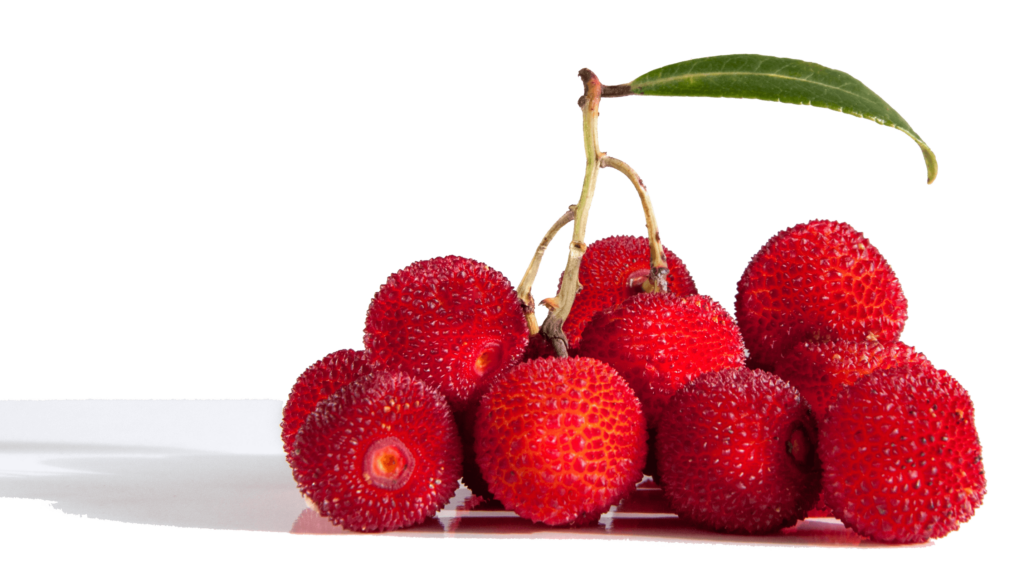
What is a yumberry? The Chinese name is yangmei 杨梅, the Latin name is Myrica rubra and the English name is red bayberry or waxberry. “Yumberry” was coined by an American nurseryman in 2003 who thought yangmei sounded like “yummy” and set the yumberry name in use.
This beautiful fruit is – as far as we know – only commercially grown in China. The main growing province is Zhejiang and present production is around 140,000 hectares of which approximately 100,000 hectares are cultivated.
The cultivation area is increasing and spreading into other provinces that have similar subtropical climates. Yangmei production is ancient in China; there is evidence of cultivation since neolithic times, some 7000 years ago.
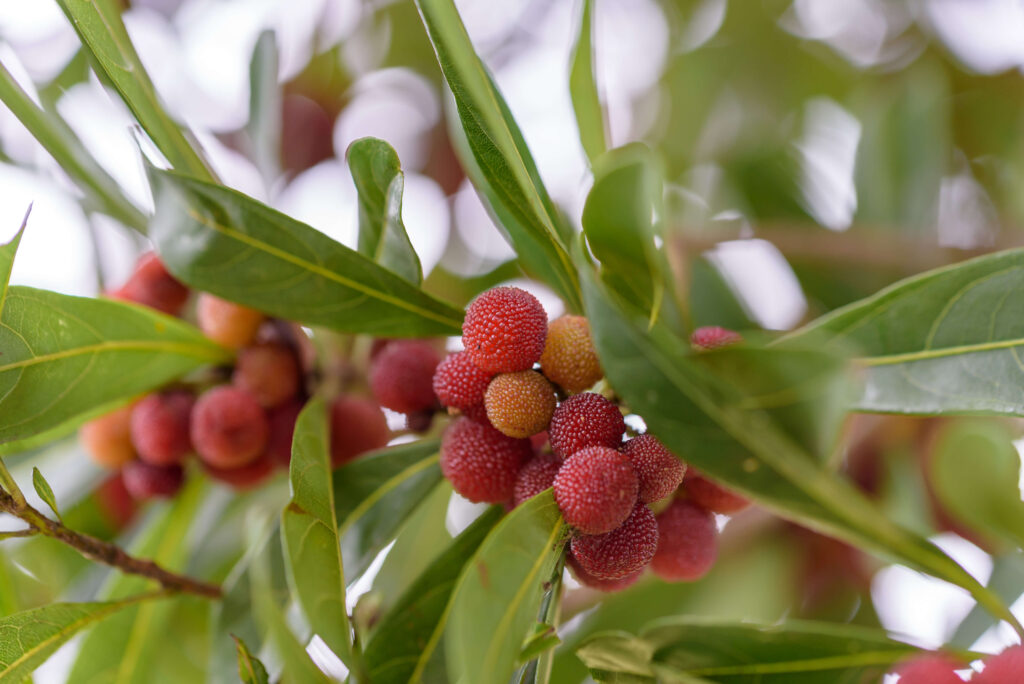
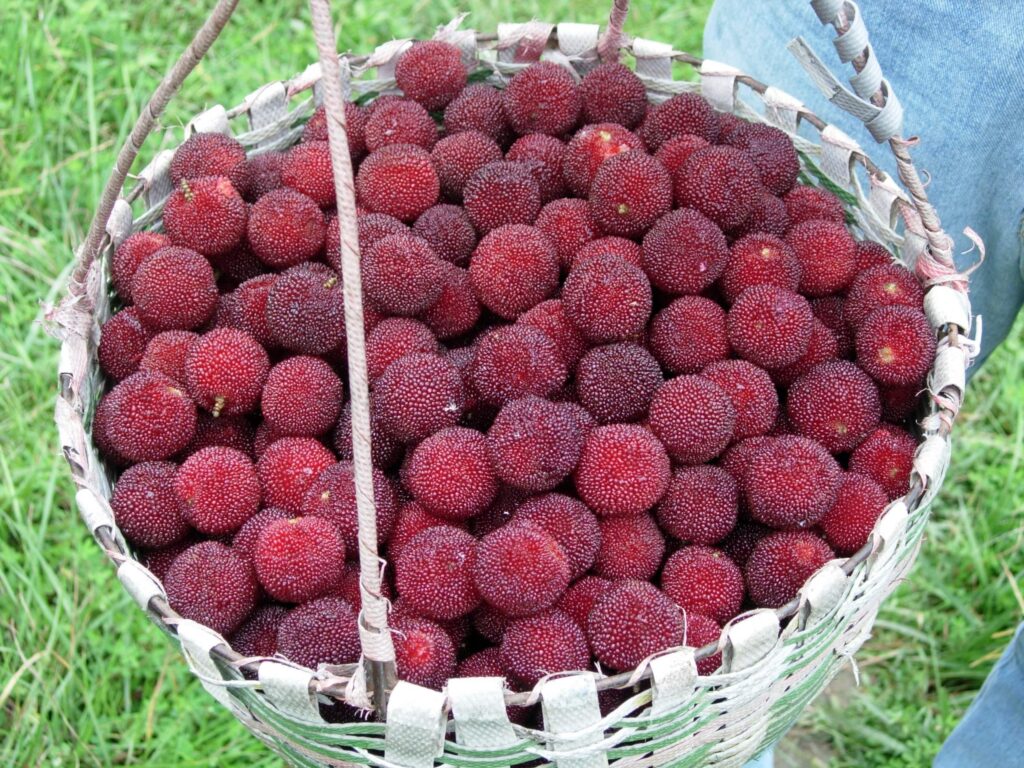
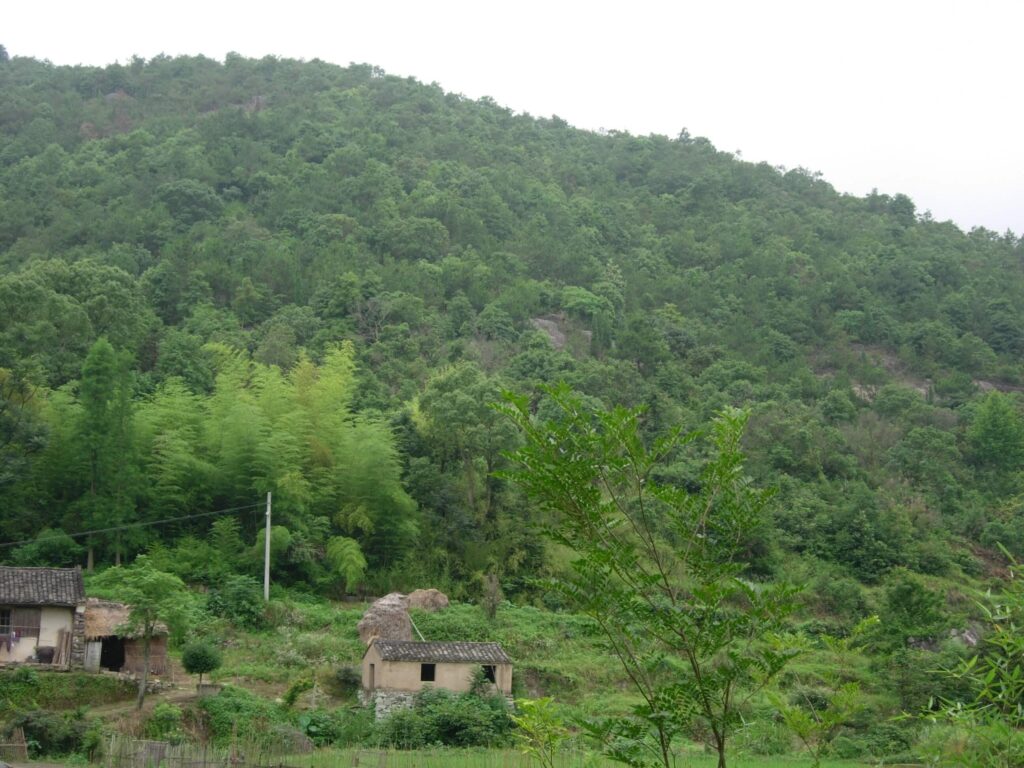
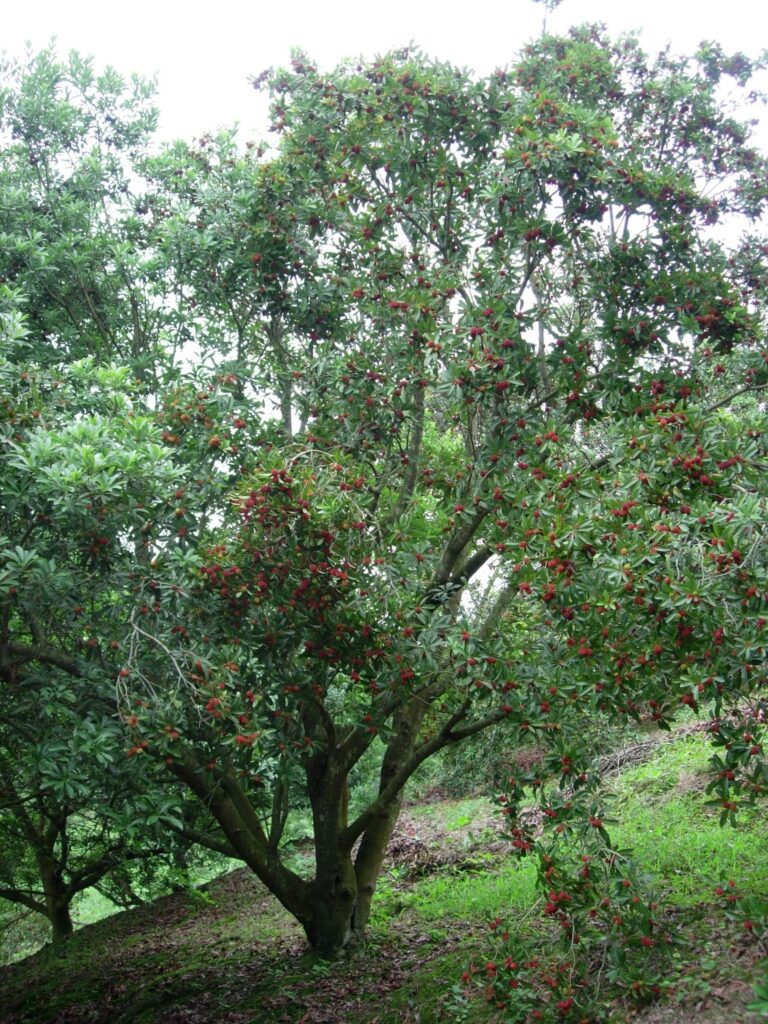
Commercial Production
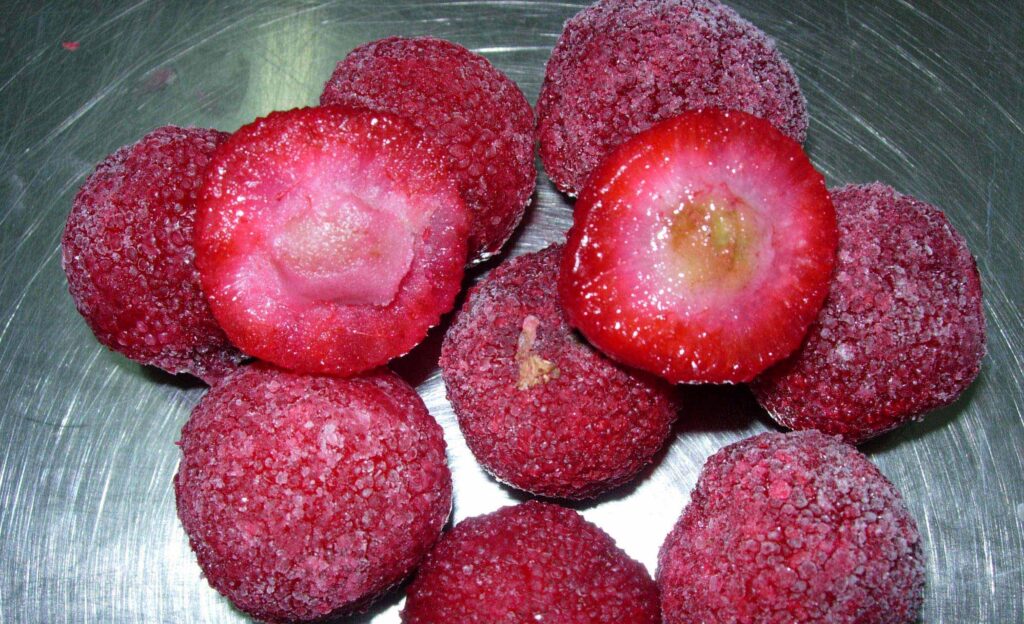
The fruit is about 2-3 cm in diameter and a beautiful deep red to purple-red colour. The internal colour is red but darker at the outer edges and lighter towards the stone. It is this very substantial stone that makes processing something of a challenge.
The flesh is made up of long cells called papilla which are attached very firmly to the stone, so in our view yumberry is not a fruit that could be easily pitted by machine. Maybe the labour-intensive production is the reason the fruit is still pretty much exclusive to China.
On the surface of the fruit the papilla form a knobbly texture something like the outer skin of a lychee. It is very attractive and it is a pity that the stone does limit the possibilities of this fruit as an IQF item. The flavour of yumberry is sweet but with a pleasantly tart bite.
Yumberry makes a stunning frozen puree – seed out of course! The colour is a superb deep red. There is virtually no nutrient loss when we produce yumberry puree at Dragons Garden as we use no heat treatment and the full range of anthocyanins and vitamins are preserved. This fruit also has great potential as a dried item.
